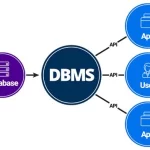
Step-by-Step Guide to Retrieving Allele Frequencies from the 1000 Genomes Project
January 10, 2025This guide provides a comprehensive approach to retrieving allele frequencies from the 1000 Genomes Project using various tools and programming languages such as Unix, R, Python, and Perl. The focus is on extracting allele frequencies for specific variants in the YRI (Yoruba in Ibadan, Nigeria) population, which is relevant for African-American genetic studies.
Step 1: Understanding the Data and Tools
The 1000 Genomes Project provides a wealth of genetic data, including allele frequencies for different populations. To retrieve allele frequencies without downloading the entire dataset, you can use tools like tabix, vcftools, and APIs from Ensembl or myvariant.info.
Step 2: Using Tabix and VCFtools (Unix)
Step 2.1: Install Required Tools
Ensure you have tabix and vcftools installed. You can install them using the following commands:
# Install tabix and vcftools sudo apt-get install tabix vcftools
Step 2.2: Download Genotype Data
Use tabix to download genotype data for a specific region from the 1000 Genomes Project. For example, to retrieve data for chromosome 12 between positions 101266000 and 101422000:
tabix -f -h ftp://ftp.1000genomes.ebi.ac.uk/vol1/ftp/release/20100804/supporting/AFR.2of4intersection_allele_freq.20100804.genotypes.vcf.gz 12:101266000-101422000 > afr.vcf
Step 2.3: Calculate Allele Frequencies
Use vcftools to calculate allele frequencies from the downloaded VCF file:
vcftools --vcf afr.vcf --freq --out freq-afr
This will generate a file (freq-afr.frq) with allele frequencies for the specified region.
Step 3: Using Ensembl Perl API
Step 3.1: Install Ensembl Perl API
Install the Ensembl Perl API by following the instructions on the Ensembl website.
Step 3.2: Fetch Allele Frequencies by Position
Use the following Perl script to fetch allele frequencies for a specific genomic position:
#!/usr/local/bin/perl use strict; use warnings; use Bio::EnsEMBL::Registry; my $reg = 'Bio::EnsEMBL::Registry'; $reg->load_registry_from_db( -host => 'ensembldb.ensembl.org', -user => 'anonymous' ); my $sa = $reg->get_adaptor("human", "core", "slice"); my $vfa = $reg->get_adaptor("human", "variation", "variationfeature"); my $chromosome = '12'; # Change to your chromosome of interest my $position = 101266049; # Change to your position of interest my $slice = $sa->fetch_by_region('chromosome', $chromosome, $position, $position); my @vfs = @{$vfa->fetch_all_by_Slice($slice)}; foreach my $vf(@vfs){ my @alleles = @{$vf->variation->get_all_Alleles()}; foreach my $allele(@alleles) { if($allele->population && $allele->population->name =~ /1000GENOMES.*YRI/){ print $vf->seq_region_name, "\t", $vf->seq_region_start, "\t", $vf->seq_region_end, "\t", $vf->variation->name, "\t", $allele->allele, "\t", (defined($allele->frequency) ? $allele->frequency : "-"), "\t", $allele->population->name, "\n"; } } }
Step 4: Using Python and MyVariant.info
Step 4.1: Install MyVariant Package
Install the myvariant package using pip:
pip install myvariantStep 4.2: Fetch Allele Frequencies by RSID
Use the following Python script to fetch allele frequencies for a specific variant by its RSID:
import myvariant mv = myvariant.MyVariantInfo() result = mv.query('dbsnp.rsid:rs58991260', fields='dbsnp')['hits'][0]['dbsnp']['gmaf'] print("Allele Frequency:", result)
Step 4.3: Fetch Allele Frequencies by Position
To fetch allele frequencies by genomic position, modify the query:
import myvariant mv = myvariant.MyVariantInfo() result = mv.query('chr12:101266049', fields='dbsnp')['hits'][0]['dbsnp']['gmaf'] print("Allele Frequency:", result)
Step 5: Using R and Bioconductor
Step 5.1: Install Required R Packages
Install the VariantAnnotation and ensemblVEP packages from Bioconductor:
if (!require("BiocManager", quietly = TRUE))
install.packages("BiocManager")
BiocManager::install("VariantAnnotation")
BiocManager::install("ensemblVEP")Step 5.2: Fetch Allele Frequencies
Use the following R script to fetch allele frequencies for a specific region:
library(VariantAnnotation)
library(ensemblVEP)
# Define the region of interest
region <- GRanges("12", IRanges(start=101266000, end=101422000))
# Fetch allele frequencies
vcf <- readVcf("path_to_your_vcf_file.vcf", "hg19")
freq <- alleleFrequency(vcf, region)
print(freq)Step 6: Tips and Tricks
- Use Tabix for Large Regions: Tabix is highly efficient for querying large genomic regions without downloading the entire dataset.
- Filter by Population: When using APIs, ensure you filter results by the YRI population to get relevant allele frequencies.
- Check Data Versions: Always verify that you are using the correct genome build (e.g., hg19) to avoid mismatches in positions.
- Automate Scripts: If you have a large list of variants, consider automating the process using loops in your preferred scripting language.
Conclusion
Retrieving allele frequencies from the 1000 Genomes Project can be done efficiently using tools like tabix, vcftools, and APIs from Ensembl or myvariant.info. By following this guide, you can easily extract the necessary data for your genetic studies without the need for extensive computational resources.
This guide combines multiple approaches to suit different preferences and workflows, ensuring you can retrieve allele frequencies with ease.

















